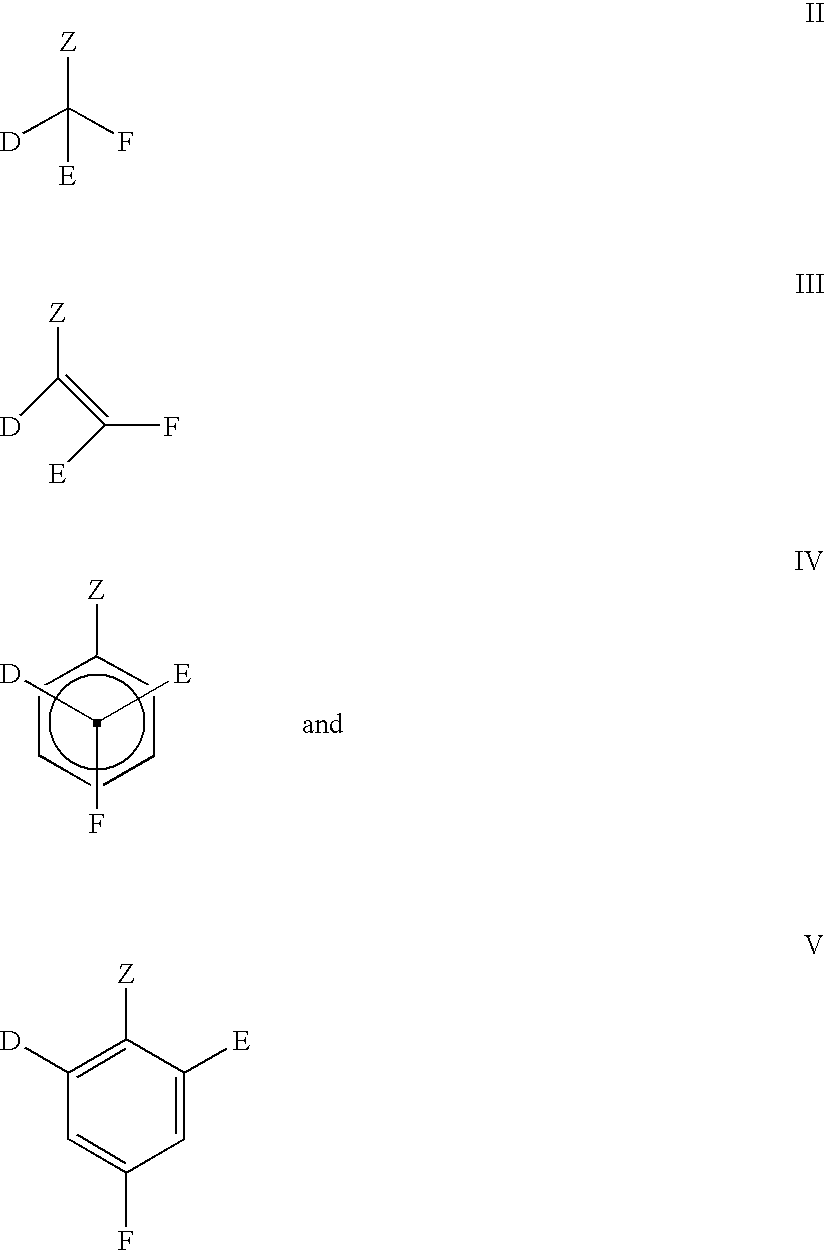Hydroscopic polymer gels for easier cleaning
a technology of hydrophilic polymer gel and cleaning composition, which is applied in the direction of superimposed coating process, liquid/solution decomposition chemical coating, cleaning using liquids, etc., can solve the problem of low contact angle of water drops placed, and achieve the effect of reducing the difficulty of “next time” cleaning, and reducing the difficulty of cleaning
- Summary
- Abstract
- Description
- Claims
- Application Information
AI Technical Summary
Benefits of technology
Problems solved by technology
Method used
Image
Examples
example 1
[0145] Cleaning compositions employing non-limiting embodiments of the inventive copolymers were prepared and tested on a variety of plastic surfaces to measure the substantivity of the copolymers to different polymeric substrates and their effectiveness at maintaining beneficial surface protective properties under challenge. Inventive copolymers A-E were formulated at a level of 2.0 wt % in an aqueous solution containing 1.0 wt % of a nonionic surfactant (APG325N) and adjusted to the final pH indicated in Table 1 using an appropriate amount of glycolic acid. Formulations were tested according to the Substantivity Test Method described hereinabove.
[0146] Results presented in Table 1 reveal that the exampled inventive copolymers of acrylic acid and tert-butylaminoethylmethacrylate are effective at depositing onto the polymeric substrates from an aqueous solution, and modifying the surfaces to exhibit water sheeting benefits over numerous rinsing cycles. The substantivity scores are ...
example 2
[0147] Inventive copolymers F-J, featuring non-limiting embodiments having alternative acidic monomer and amphipathic monomers, at varying ratios, were formulated at a level of 2.0 wt % in an aqueous solution containing 1.0 wt % of a nonionic surfactant (APG325N), then adjusted to their final pH using an appropriate amount of glycolic acid. The formulations were tested according to the Substantivity Test Method with results presented in Table 2 showing that all copolymers are effective at depositing onto the polymeric substrates from an aqueous solution, and modifying the surfaces to exhibit water sheeting benefits over numerous rinsing cycles. For copolymers F and G, a tendency for increased substantivity on the more hydrophobic PVC and polystyrene substrates is noted. Effects of alternative monomer compositions is seen in non-limiting embodiments of terpolymers G and H which comprise differing ratios of the acidic monomers acrylic acid and methacrylic acid and an amphipathic monom...
example 3
[0149] Inventive copolymers K-S, featuring non-limiting embodiments having alternative acidic monomer and amphipathic monomers, at varying ratios, as well as differing average molecular weights were formulated at a level of 2.0 wt % in an aqueous solution containing 1.0 wt % of a nonionic surfactant (APG325N), then adjusted to their final pH using an appropriate amount of glycolic acid and / or sodium hydroxide. The effect of pH is first explored in Table 3 on an inventive non-limiting embodiment of a low molecular weight terpolymer comprising a relatively low amphipathic monomer content combined with methymethacrylate and 2-propenyl allyl ester of methacrylate (AMPS) monomers. Substantivity of terpolymer K is seen to be best on an acrylic substrate, with slightly lower substantivity on other plastics, and it is noted that overall substantivity behavior remains fairly independent of the formulation pH under the test conditions employed. A higher molecular weight terpolymer L, featurin...
PUM
| Property | Measurement | Unit |
|---|---|---|
| thickness | aaaaa | aaaaa |
| contact angle | aaaaa | aaaaa |
| contact angles | aaaaa | aaaaa |
Abstract
Description
Claims
Application Information
 Login to View More
Login to View More - R&D
- Intellectual Property
- Life Sciences
- Materials
- Tech Scout
- Unparalleled Data Quality
- Higher Quality Content
- 60% Fewer Hallucinations
Browse by: Latest US Patents, China's latest patents, Technical Efficacy Thesaurus, Application Domain, Technology Topic, Popular Technical Reports.
© 2025 PatSnap. All rights reserved.Legal|Privacy policy|Modern Slavery Act Transparency Statement|Sitemap|About US| Contact US: help@patsnap.com



